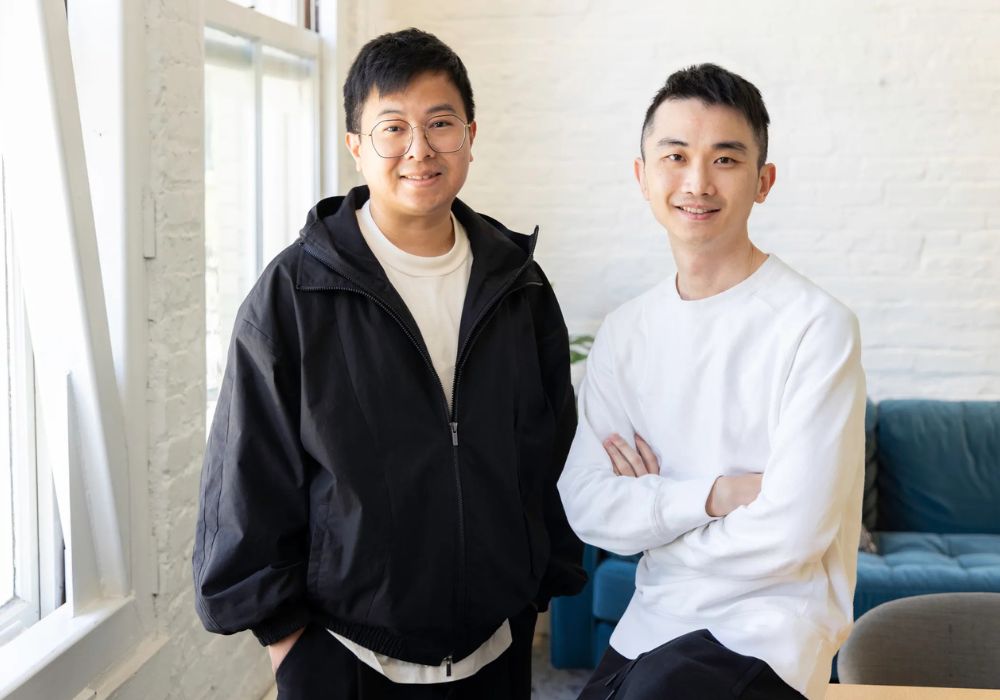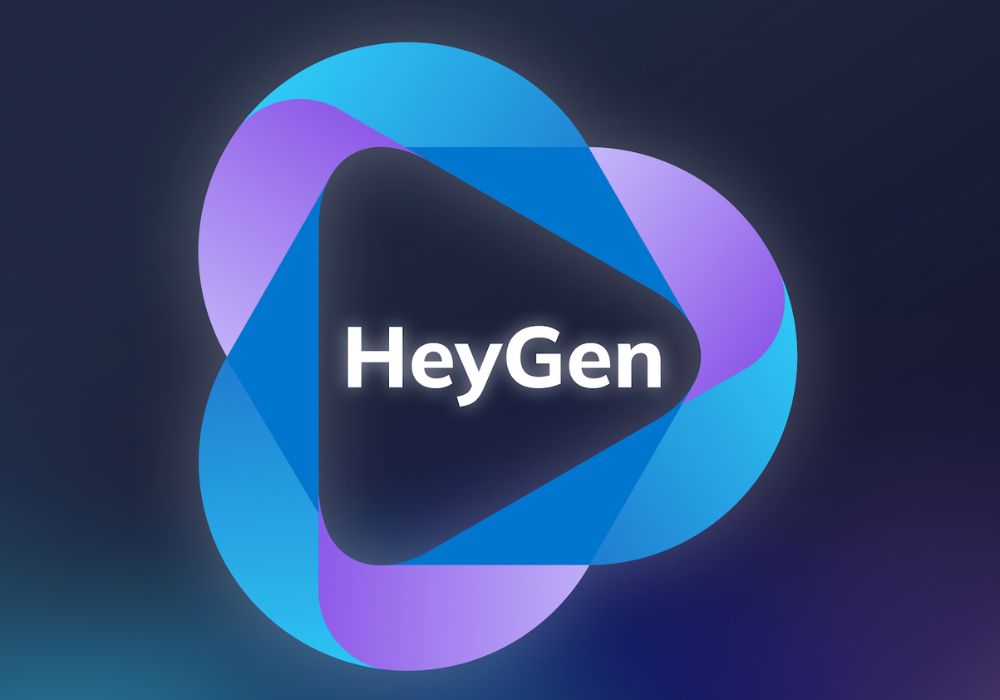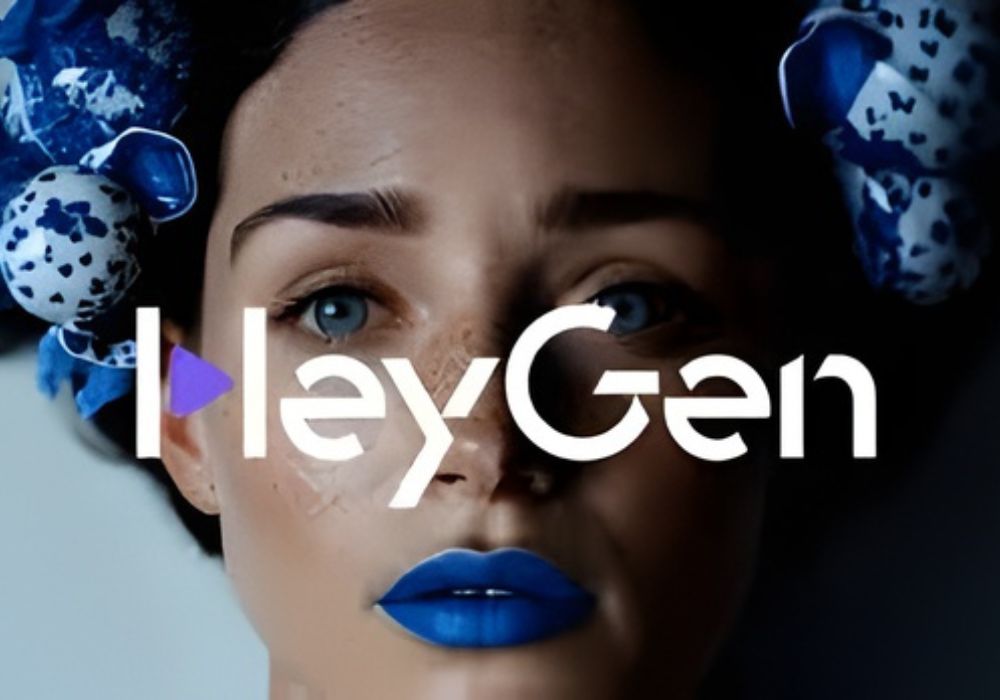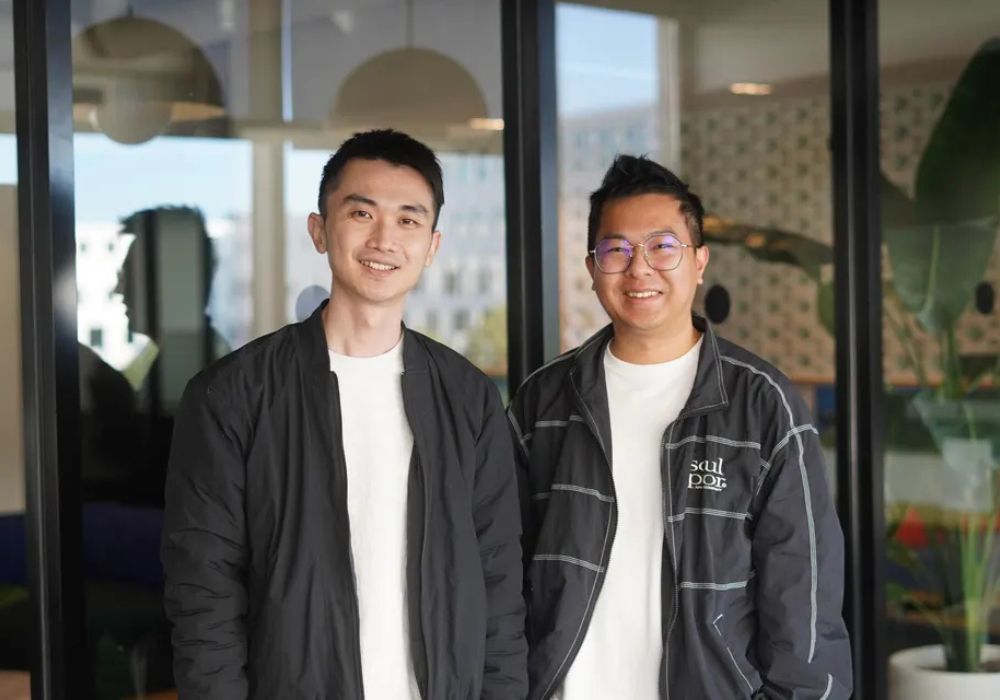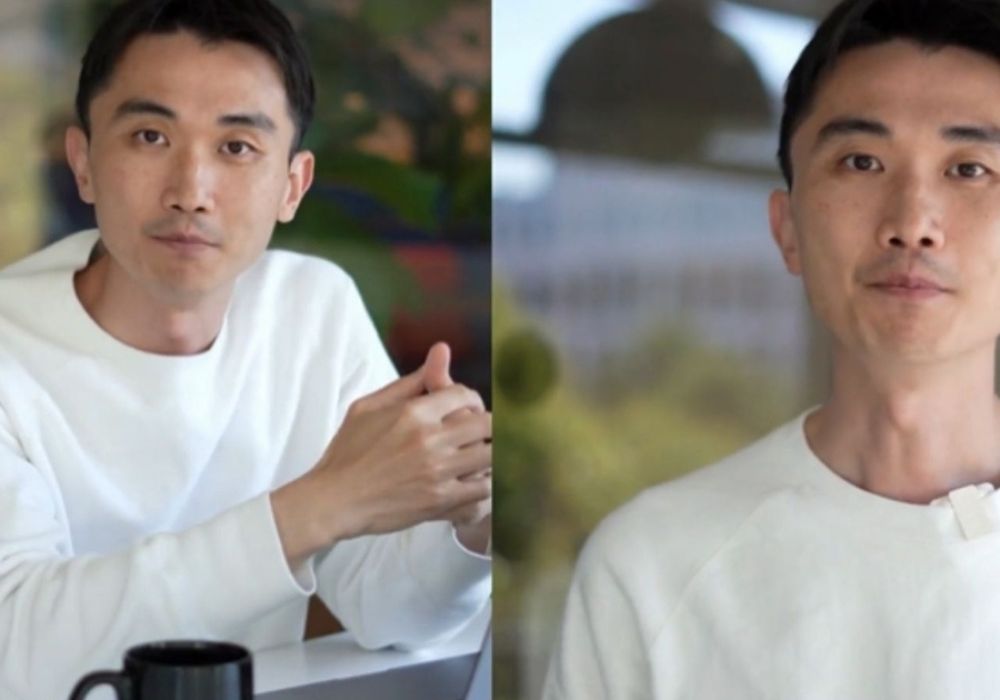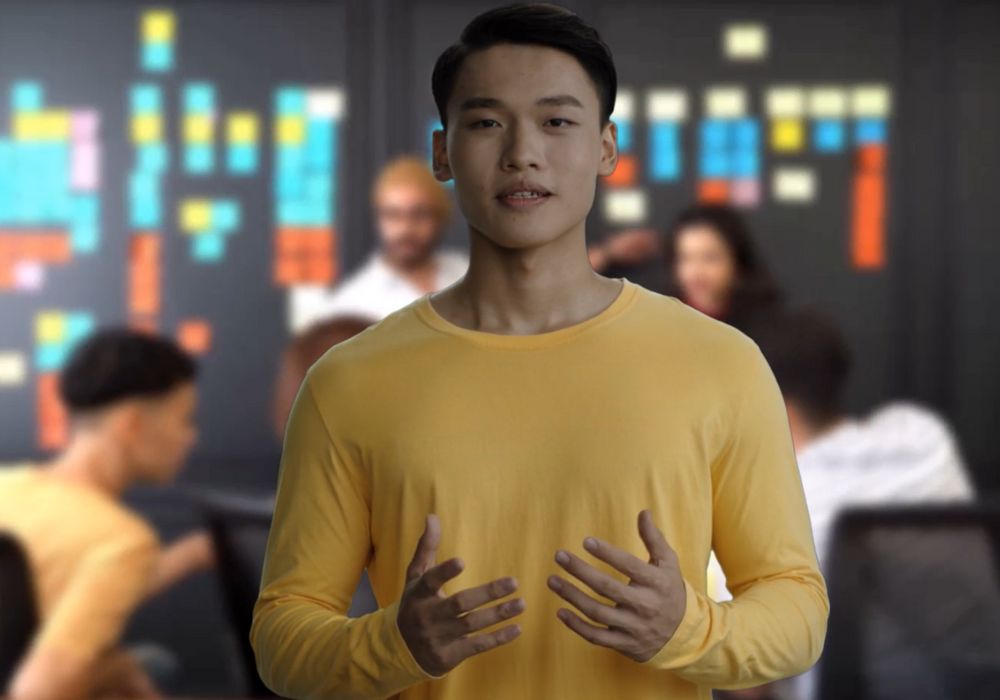The video that sparked HeyGen’s creation was supposed to be a secret—a crude, 30-second proof-of-concept. In late 2021, co-founders Joshua Xu and Wayne Liang huddled around a single laptop in a sparse office. They typed a script in English, selected a Chinese-speaking avatar, and hit “Generate.”
What appeared on the screen seconds later was not just a video; it was a vision of the future. The avatar’s lips moved in perfect, fluid sync with the Mandarin audio. The tone was natural, not robotic. There was no expensive film crew, no green screen, no sound engineer. It was just code, creating something that felt impossibly human.
Xu, who doesn’t speak Mandarin, played the video for his mother. She understood every word. “How much did this cost?” she asked, impressed. When he told her it was generated by their AI, her disbelief was the final validation. They weren’t just building a tool; they were building a HeyGen — a universal translator for human expression powered by artificial intelligence.
This was the spark for HeyGen, a company that would soon explode from a niche AI toy into a foundational platform for global business communication, reaching a $440 million valuation in under three years and challenging the very economics of video production.
HeyGen Founding Story: The Problem in Plain Sight
The Founders:
- Joshua Xu (CEO): A former data scientist at Snapchat, Xu possessed a deep understanding of digital media and scalable tech infrastructure. He saw the immense friction in video creation firsthand.
- Wayne Liang (CPO): With a background in product and design, Liang was obsessed with user experience. He understood that for AI to be adopted, it had to be intuitive, not intimidating.
The Motivation: The “$10,000 Video” Problem.
While at Snap, Xu observed that creating a single, professional-quality marketing video could cost thousands of dollars and take weeks. They aimed to democratize this process, making it as easy to create a professional video as it is to write an email.
Early Challenges & The Pivot:
HeyGen began in 2020 as “Synthesia” (not to be confused with the similarly named company). Their initial focus was on AI-powered avatars for virtual meetings—a product that found little traction. This first critical lesson: solve for customer pain, not just technical novelty.
The pivot was swift. In late 2021, they rebranded to HeyGen and shifted entirely to AI video generation for business communication—product demos, training videos, and personalized marketing. This was the “aha” moment where technology found its purpose.
Funding:
Bootstrapped initially, HeyGen’s traction quickly led to outside interest. In 2023, they raised a $9 million Seed Round led by Basis Set Ventures, then a $5.6 million Extension Round. By mid-2024, a $60 million Series A led by Benchmark brought their valuation up to $500 million, fueling rapid growth and global market reach.
HeyGen’s Audience & Positioning: Finding the “Why Buy”
Early Adopters:
A mix of tech-savvy entrepreneurs, content creators, and social media managers who embraced bugs for breakthrough capabilities.
Audience Refinement: The Enterprise Pivot.
HeyGen’s evolving data revealed its most valuable users—B2B marketing teams, sales development representatives, and corporate learning departments. Specific metrics included marketing teams localizing campaigns into 10 languages in hours, sales teams using personalized video outreach, and L&D teams standardizing global training videos.
Unique Value Propositions:
- Radical Efficiency: “From 3 weeks to 15 minutes.” Not hyperbole, but a measurable shift for anyone with video experience.
- Effortless Localization: Their AI translator matched lip movements to new languages, solving a $100B corporate challenge.
- Accessibility, Not Just Ability: Seamless, browser-based UX made anyone a video creator—AI at your fingertips.
HeyGen Marketing Platforms & Strategies: The Virality Engine
Platform Focus:
LinkedIn & X (Twitter) for public demos and direct B2B engagement. YouTube grew as a repository for tutorials and user showcases. Product Hunt launches brought surges of early adopters.
Winning Content & Messaging:
- “Show, Don’t Tell”: Their most effective ads were themselves—HeyGen-generated spokespeople revealed as avatars at the end, creating viral “aha” moments.
- UGC as Catalyst: Their users’ tutorials and language-localization demos on social went viral and drove free-tier conversions.
Campaign Example: “No-Film School” Challenge
Social campaign challenging non-video professionals to pitch a product or create video resumes using HeyGen’s templates. This increased free sign-ups by 45% month-over-month and flooded LinkedIn and Twitter with compelling UGC.
Tech Stack:
Built on Webflow, Google Analytics 4, and Mixpanel. Used Facebook Pixel and LinkedIn Insight Tag for retargeting, Hotjar for UX fixes.
Their success also aligned with broader video marketing trends in 2025, where AI-driven video, localization, and personalization became defining strategies for global brands.
Growth Milestones: The Inflection Points
- 2021: Pivot to HeyGen and sharp business video focus.
- 2022: Instant Avatar launch—users could “clone” themselves, creating massive buzz.
- 2023: Video Translator release—300% inbound interest spike.
- 2023: Series A ($440M valuation)—HeyGen positioned as market leader.
- 2024: Over 40,000 customers and $35M ARR. Used at global events; translated Argentinian president Javier Milei’s World Economic Forum speech in real time.
Challenges & Failures: The Scars of Scaling
”Uncanny Valley” Avatars:
Early models were close, but not human enough—causing discomfort. Leaning into feedback, HeyGen’s public side-by-sides of improved models became trusted evidence of their R&D focus.
Intense Competition:
Rather than feature parity, HeyGen doubled down on UX, ease, and localization, outpacing rivals by keeping non-engineers in mind. Their moat: a business-first orientation in a developer-heavy space.
Becoming a Household Name: The Virality Playbook
PR Stunts with Substance:
Demo videos showing AI avatars delivering speeches in multiple languages became headline moments. The ChatGPT excitement further helped HeyGen stand out, offering a practical and visual AI innovation to the world.
Building Loyalty:
Relentless innovation, transparent roadmaps, and a lively user community—users felt like participants on the journey, driving retention as much as conversions.
Financial & Operational Insights
- Revenue: Estimated $10M ARR in 2023, $35M ARR by mid-2024.
- Funding: $9M seed, $5.6M extension, $60M+ Series A, $500M–$540M valuation.
- Product Iterations: Templates for sales, e-learning, social ads reduced friction, democratized the tech.
- Operational Shifts: Moved HQ to Los Angeles, scaled engineering, trust & safety, streamlined for enterprise needs.
Lessons Learned: The HeyGen Blueprint
- Pivot on Pain, Not Just Tech: Success began with addressing the “$10,000 video” bottleneck.
- Let the Product Be the Prophet: Mind-blowing demos beat marketing speak.
- Strategic Transparency: Owning failures and charting improvements wins trust.
- Double Down on Differentiators: Localization and simple UI made HeyGen the clear business choice.
- Build for the User, Not the Engineer: Mass-market adoption demands intuitive design.
- Community as Accelerator: Empower customers—every authentic win becomes another growth engine.
The New Universal Language
HeyGen’s journey is something more than just an AI success story. It’s a blueprint for the future of communication—where code bridges cultures instantly, and where creativity is limited only by imagination, not resources. From a secret office demo in Shenzhen to a $500M household name, HeyGen unlocked a way for anyone, anywhere, to share their story in their own language, with just a click.
